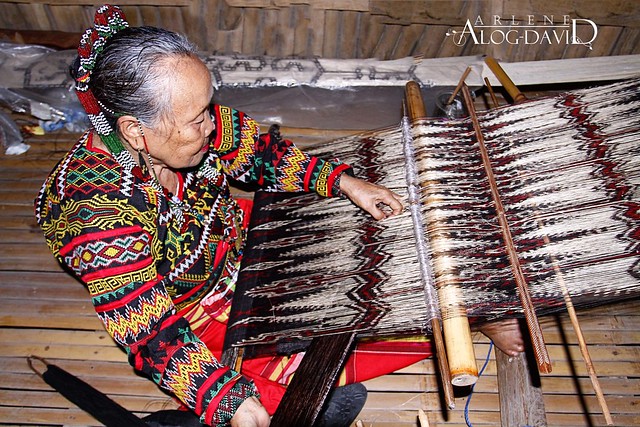
-
МјРЇСІИёСЖШИМі
-
 Malacañang Palace-Official Residence of the Pres
Malacañang Palace-Official Residence of the Pres 138,879
138,879 -
 Amana Water Park
Amana Water Park 115,400
115,400 -
 IFUGAO TRIBE
IFUGAO TRIBE 109,383
109,383 -
 Santacruzan-The Queen of all Filipino Festivals109,270
Santacruzan-The Queen of all Filipino Festivals109,270 -
 Water Refilling Station: an alternative source of drink107,159
Water Refilling Station: an alternative source of drink107,159 -
 LAMBANOG-THE POOR MAN\'S DRINK104,512
LAMBANOG-THE POOR MAN\'S DRINK104,512 -
 Christmas Parol [lantern in English]104,359
Christmas Parol [lantern in English]104,359 -
 HANGING RICE97,032
HANGING RICE97,032 -
 Taoist Temple93,994
Taoist Temple93,994 -
 Corn Fields in the Philippines90,466
Corn Fields in the Philippines90,466
LANG DULAY
''The Dream Weaver''
LANG DULAY
Lake Sebu, South Cotabato
1998 Awardee
LAKE SEBU, South Cotabato – It is dusk on the banks of Lake Sebu. We wait for Lang Dulay,
the famous TЁЏboli dreamweaver. In her nearly bare longhouse, the only ornament inside is a backstrap
weaving loom where she sits every day, crafting the designs she has dreamt about.
Where the spirit of abaca (a type of indigenous fiber), Fu Dalu, has spoken to her of intricate patterns.
Soon, a hunched figure appears.ЁАI started dreaming of the designs when I was 12 years old. I kept on
dreaming, so I wove even more... And I never forget my dreams,ЁБ Lang Dulay narrates.
She holds up one of her three-meter TЁЏnalak cloths that has taken her four months to complete. Carefully,
she showed me how to work the hemp fibers and how the cowry shell was used to polish the weaves.
ЁАThis pattern represents the bubbles of the sea, and here — the shield of a warrior. Whatever I see in my dreams is what inspires me,ЁБ she says.The geometrical designs represent TЁЏboli traditions. Colors are significant: red for
bravery, commitment and love, and black for their struggles. The cloth is woven into wall hangings, clothes,
bags or wallets.
Using abaca fibers as fine as hair, Lang Dulay speaks more eloquently than words can. Images from the distant past of her people, the Tbolis, are recreated by her nimble hands – the crocodiles, butterflies and flowers, along with mountains and streams, of Lake Sebu, South Cotabato, where she and her ancestors were born – fill the fabric with their longing to be remembered. Through her weaving, Lang Dulay does what she can to keep her peopleЁЏs tradition alive.
There are a few of them left, the traditional weavers of the tnalak or Tboli cloth. It is not hard to see why: weaving tnalak is a tedious process that begins with stripping the stem of the abaca plant to get the fibers, to coaxing even finer fibers for the textile, then drying the threads and tying each strand by hand. Afterwards, there is the delicate task of setting the strands on the "bed-tying" frame made of bamboo, with an eye towards deciding which strands should be tied to resist the dye. It is the bud or tying of the abaca fibers that defines the design.
A roll of tnalak must be individually set on a back strap loom, so called because of the broad band the weaver sets against her back
to provide tension to the work. There is great strain on the weaverЁЏs back and eyes, particularly since Tboli women are required
to help out in the fields to augment the family income. It is only after the farm work is done that the weaver can sit down to her designs.
Also, due to the peculiarity of the fiber, of its getting brittle under the noon day sun, working on it is preferred during the cool evenings
or early morn. Lang Dulay knows a hundred designs, including the bulinglangit (clouds), the bankiring (hair bangs), and the kabangi (butterfly), each one special for the stories it tells. Using red and black dyes, she spins her stories with grace. Her textiles reflect the wisdom and the visions of her people.
Before the 1960s, the Tboli bartered tnalak for horses, which played an important role in their work. Upon the establishment of the
St. Cruz Mission, which encouraged the community to weave and provided them with a means to market their produce, the tnalak
designs gained widespread popularity and enable weavers like Lang to earn a steady income from their art. However, the demand also
resulted in the commercialization of the tnalak industry, with outsiders coming in to impose their own designs on the tboli weavers.
- ЁЄfYGbJbhcBF

- ЁЄfYGbJbhcBF

- ЁЄfYGbJbhcBF

- ЁЄfYGbJbhcBF

- ЁЄfYGbJbhcBF

- ЁЄfYGbJbhcBF

- ЁЄfYGbJbhcBF

- ЁЄfYGbJbhcBF

- ЁЄfYGbJbhcBF

- ЁЄfYGbJbhcBF

- ЁЄfYGbJbhcBF

- ЁЄfYGbJbhcBF

- ЁЄfYGbJbhcBF

- ЁЄfYGbJbhcBF

- ЁЄfYGbJbhcBF




- ЁЄSaDEVEqmgq

- ЁЄSaDEVEqmgq

- ЁЄSaDEVEqmgq\'\"\\(

- ЁЄSaDEVEqmgqщ\'\"\\(

- ЁЄSaDEVEqmgq

- ЁЄSaDEVEqmgq

- ЁЄSaDEVEqmgq

- ЁЄSaDEVEqmgq

- ЁЄSaDEVEqmgq

- ЁЄSaDEVEqmgq

- ЁЄSaDEVEqmgq

- ЁЄSaDEVEqmgq

- ЁЄSaDEVEqmgq

- ЁЄSaDEVEqmgq

- ЁЄSaDEVEqmgq




- ЁЄqpvwYmzPrC

- ЁЄqpvwYmzPrC

- ЁЄqpvwYmzPrC

- ЁЄqpvwYmzPrC

- ЁЄqpvwYmzPrC

- ЁЄqpvwYmzPrC

- ЁЄqpvwYmzPrC

- ЁЄqpvwYmzPrC

- ЁЄqpvwYmzPrC\'\"\\(

- ЁЄqpvwYmzPrCщ\'\"\\(

- ЁЄqpvwYmzPrC

- ЁЄqpvwYmzPrC

- ЁЄqpvwYmzPrC

- ЁЄqpvwYmzPrC

- ЁЄqpvwYmzPrC














 ЧЪРкДхФФ ОпАЃЛѓДу ПРЧТ
ЧЪРкДхФФ ОпАЃЛѓДу ПРЧТ 11ГтПЌМг МвКёРкИИСЗ 1РЇ
11ГтПЌМг МвКёРкИИСЗ 1РЇ
 ГЛАд ИТДТ ОюЧаПј УЃБт
ГЛАд ИТДТ ОюЧаПј УЃБт
 ИЎОѓ ЧаБГ ЙцЙЎБт
ИЎОѓ ЧаБГ ЙцЙЎБт
 СжИЛПЁ ГЛАЁ ОЕ КёПыРК?
СжИЛПЁ ГЛАЁ ОЕ КёПыРК? УжАэАЁМККё РЬКЅЦЎ СёБтБт
УжАэАЁМККё РЬКЅЦЎ СёБтБт
 ЧіСіПЁМЕЕ ЧЪРкДхФФ!
ЧіСіПЁМЕЕ ЧЪРкДхФФ! ЧіСіПЁМ АЁДЩЧб
ЧіСіПЁМ АЁДЩЧб









 ЧЪРк ЦЏБо Ч§ХУ! ФСНУОюСі МКёНК
ЧЪРк ЦЏБо Ч§ХУ! ФСНУОюСі МКёНК



 АЁСЗПЌМіЗЮ ДйЧдАд ОзЦМКёЦМ
АЁСЗПЌМіЗЮ ДйЧдАд ОзЦМКёЦМ




































